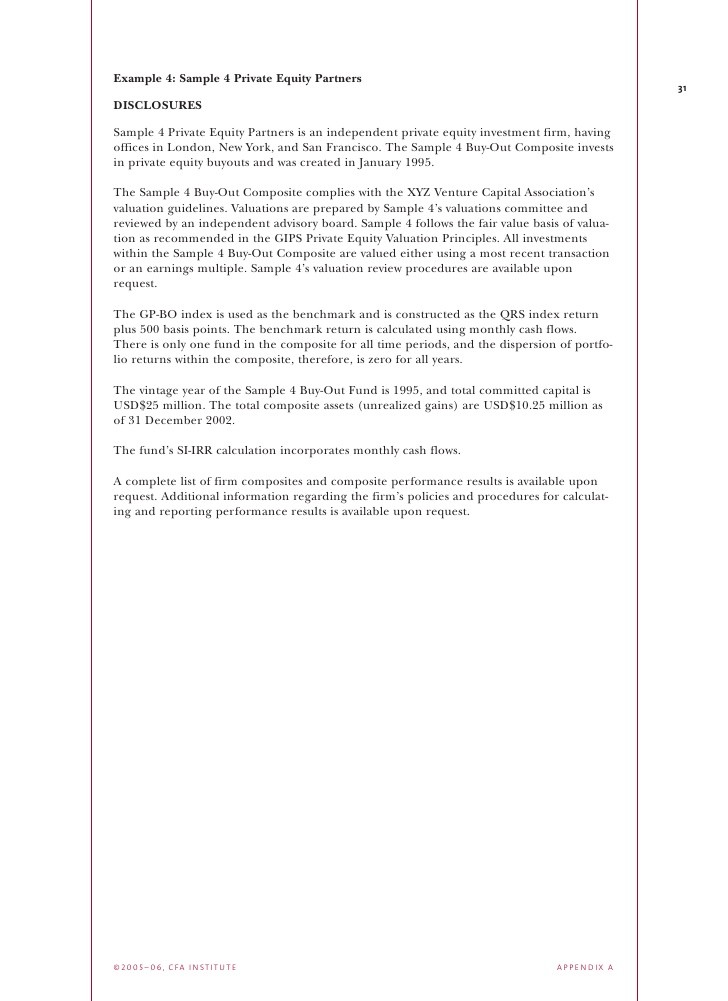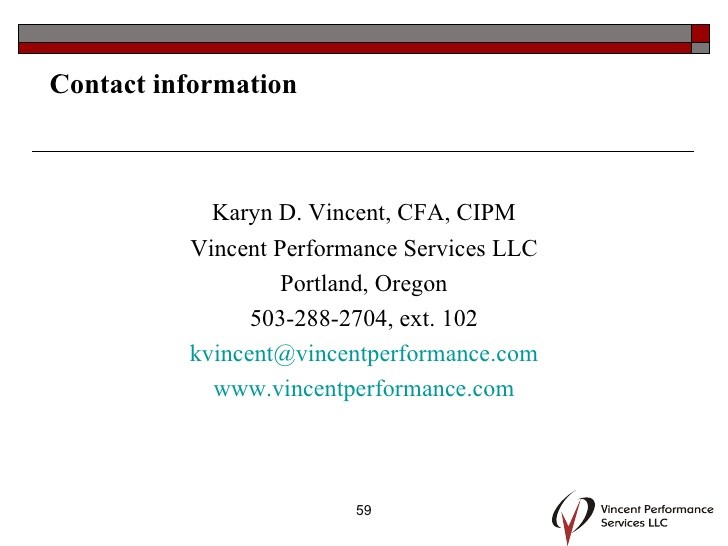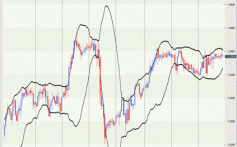Global Investment Performance Standards_1
Post on: 16 Март, 2015 No Comment

Global Investment Performance Standards
Brief History
GIPS are ethical standards that apply to the way investment performance is presented to potential and existing clients. The predecessors to GIPS were the Association for Investment Management and Research-Performance Presentation Standards (AIMR-PPS). The original AIMR-PPS handbook was published in the year 1993, but these ethical standards were not as global in their scope as the current GIPS.
In the year 1995, AIMR formed a GIPS committee to work on developing global standards; and by 1999, the first edition of GIPS had been published. At this time, the CFA Institute (then known as the Association for Investment Management and Research) also established the Investment Performance Council (IPC) to further develop the standards. By 2005, the CFA Institute had approved the new edition of GIPS and moved toward the convergence of the PPS and GIPS with an official effective date of 1st Jan, 2006. As of this date, the AIMR-PPS ceased to exist, and AIMR-compliant firms were encouraged to become GIPS compliant.
Why Move to a Global Standard?
The investment management industry is becoming more global. Many asset managers not only compete for business in their home markets, but in foreign markets as well. The North American and Western European markets are very well developed, but other markets are catching up and becoming more sophisticated as well. For investment firms outside the U.S. or European Union, being GIPS compliant can provide legitimacy and give investors confidence that the firm strives to meet the highest standards.
Being GIPS compliant can actually make things easier for firms that are trying to compete in multiple markets, because they only have to abide by one set of standards and they can avoid having to make major changes in their presentation or calculation methods when working in other countries. In other words, GIPS fill a need for standardization across a far-flung industry.
Is GIPS Necessary?
GIPS are standards, not laws. Firms do not have to be GIPS compliant. Furthermore, these standards are not codified into U.S. securities law. However, although they are voluntary, they provide discipline to the calculation and confidence in the performance represented.
Before performance is calculated and presented, there is some groundwork for the firm to do. The first thing a firm must do is actually define the firm. This may sound very obvious, but there might be legitimate reasons that a subsidiary would be excluded from a firm definition.
The next step involves a firms composites. One of the most important things a firm can do is to define its composites in a logical and meaningful way. GIPS require that all of a firms discretionary, fee-paying portfolios be included in at least one composite. The GIPS Handbook defines a composite as, an aggregation of one or more portfolios into a single group that represents a particular investment objective or strategy — think emerging market equity or global fixed-income.
The provisions of the standards cover several other items including calculation, as well as presentations and disclosures. For example, time-weighted (as opposed to money-weighted) rates of return are required. Some firms probably feel as though the largest part of their performance presentations are the GIPS required disclosures, as firms are required to disclose many items including a definition of the firm, whether performance is net of fees or gross of fees, and what additional information must be disclosed upon request. In the 2006 edition of GIPS alone, there are close to 30 required disclosures.
Fair Representation of Historical Performance

One of the stated objectives of GIPS deals with ensuring accurate and consistent investment performance. The standards require firms to initially show a minimum of five years of GIPS compliant history. After this minimum, the firm must build up to a track record of 10 years. If the composite has been in existence for fewer than five years, the firm must show its entire history since inception. Because investors should always be wary if a firm shows only the best years of its performance, this requirement should be able to stop the practice of cherry picking.
For example, an investment that may look great if a firm only shows the last two years, in which the investment experienced positive returns. However, suppose that the three years prior to this, the firm experienced negative returns; if the firm did not reveal the investments earlier performance, investors would get a completely different impression of the firms asset-management abilities. Having a consistent standard helps investors make more informed choices and may increase their confidence in the investment management industry.
Why Firms Choose to be GIPS Compliant
It may seem that with all of the extra work involved, it would be a hassle for a firm to be GIPS compliant. However, because the GIPS standards have become so widely accepted, an institutional asset manager who is non-compliant may be at a competitive disadvantage. In the U.S. many investment consultants will not even consider a firms investments for their institutional clients if it is not GIPS compliant. GIPS compliance also helps firms compete internationally.
Verification
Firms that claim compliance with GIPS can be independently verified by a third party. Verification is voluntary at this point, but many firms choose to be verified to help identify gaps in procedures, and to give clients peace of mind. There are firms that specialize in this type of verification and performance measurement consulting. Once a firm has been verified, it may add a disclosure stating such in its GIPS-compliant marketing materials.
The Bottom Line
An investment management firms clients or prospective clients can benefit from GIPS standards because they provide standards for investment performance, making it easier for investors to compare firms and make more informed decisions. To learn more about the specifics of the standards, check out the GIPS Handbook on the CFA website.














